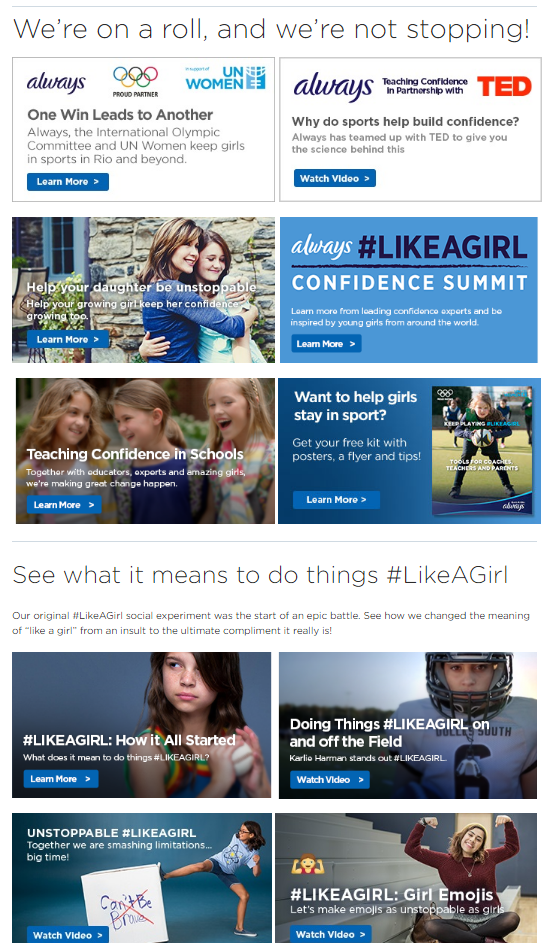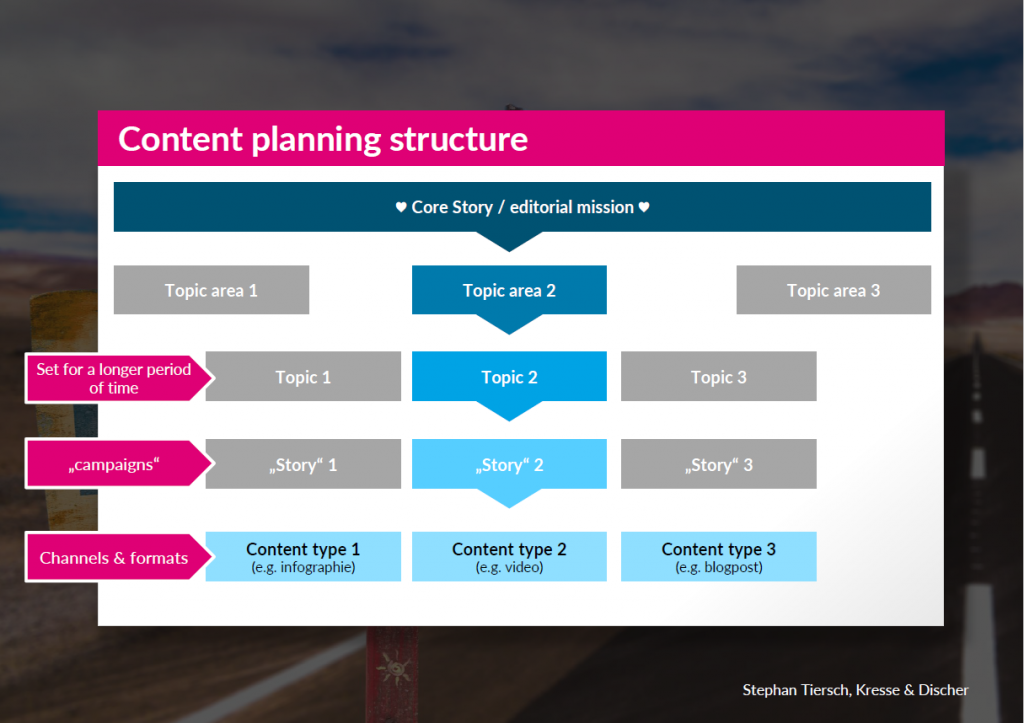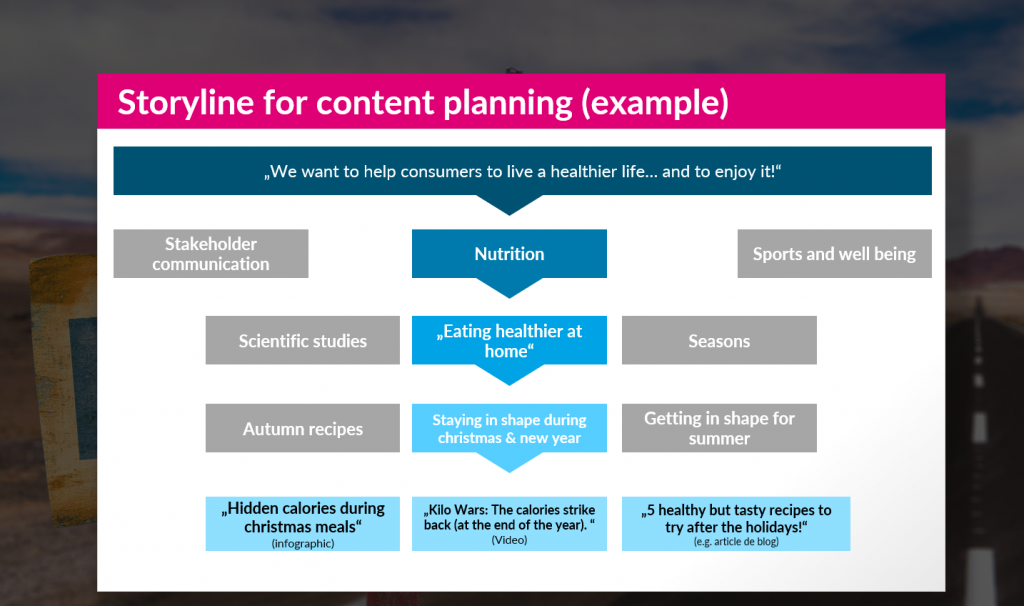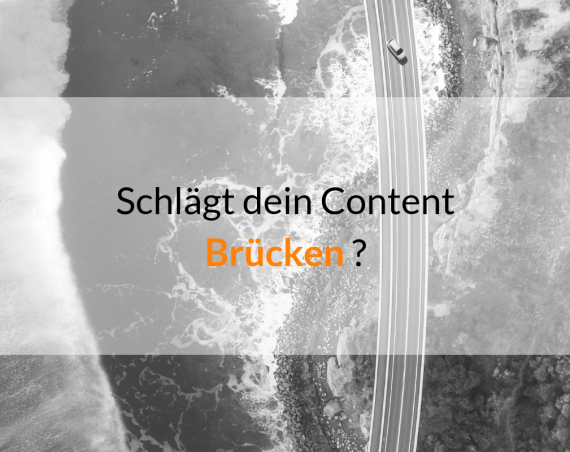Planning for content marketing is often done under the wrong impulses. Either we get pressured by channels („it’s been a while we published something“), by formats („hey we need leads, let’s do a webinar / a whitepaper“) or jumping on the new shiny thing („infographics are cool now, let’s do one as well!“). To avoid these pitfalls that don’t do much for your strategy in the long term, you should design a storyline…
Storytelling is a concept that is very tightly linked to Content Marketing. However often it’s not easy to grasp, even less to put into practice – one reason being that we think of storytelling as something that is linear i.e. has a beginning and an end and stuff happening in between (even though, it’s actually a cycle).
What „business storytelling“ actually means is best explained by Robert Rose in this post on the blog of 7theraofmarketing.com:
[…] The second, more typical kind of storytelling that businesses talk about is the brand story and how to express the ideas for which the company stands. These expressions come in varying content-driven forms: websites, blogs, magazines, email newsletters, etc.
These content-driven experiences are not, themselves, linear stories but rather collections of content that when consumed hopefully tell the brand story.“ – R. Rose
This is an important paradigm shift… As I wrote in several posts before (e.g. this one), creating and publishing „content“ is not what it’s about. It’s all about creating a set of experiences which we need „content“ for in order to achieve our goals but also resonate with the audience.
To do this, it’s important to be very clear on topics and stories you want to tell. Which is exactly what a storyline is for.
Content marketing planning – the structure of a storyline
We can’t approach communications by being channel or format-driven. Channels and providers of services related to the production of formats want to make businesses believe that they won’t be able to survive if they don’t use these channels („you can’t afford not to be on Snapchat anymore!“) or formats („you have to incorporate video / infrographics / … in your content strategy!“). But truth is: for businesses, channels and formats are just the means to an end. There is no value in using channels or using formats without a clear communication strategy…
For planning your content initiatives, you need a clear idea about:
- What the central story / mission is,
- what topics you are going to talk about long term
- who you want to address (obviously) and what is „value“, „meaningful“ or „relevant“ to them and if you can combine that with achieving your own goals,
- And how you can tell „stories“ in different ways over different channels and formats.
This topic centric approach requires businesses to structure the big story they want to tell. One example I like a lot is Always‘ #Likeagirl. Check out the following video in which it’s very clear what fundamental need they address for a clearly defined audience: CHECK OUT THIS VIDEO
And it’s not just a campaign. It’s the positioning of the brand, the very identity, as the second video shows (same idea, different execution): VIEW VIDEO ON YOUTUBE [Embed removed for GDPR compliance ]
This purpose is the core, the beating heart of the storyline. Once you have that, you can break it down into smaller elements and „tell“ this story to your audiences, in the format and via the channel(s) that are the most efficient ones for getting it accross.
Always organizes events in schools around that idea, tells stories of girls, encourage girls to do more sport to build their confidence, publish tips & advice for different audiences… etc
Once you have a central story and you are clear of your communication structure, it becomes much „easier“ and clearer! The structure I recommend using for building your storyline looks like this:
- The core story, the beating heart of what you do (please take the time to have a look at this TED Talk from Simon Sinek if you don’t know it => The golden circle)
- Topic areas are different perspectives of your story (often for different stakeholders) e.g. service / „around product“ / „about product“ / etc.
- Topics (which are usually broader topics but set for at least a few months if not years. These are topics you want to talk about, to contribute but also for which you want your brand to potentially want become top of mind.
- Stories that are defined sets of content „experiences“ with key messages you want to convey. (e.g. „campaigns“)
- Channels & formats in which you are going to convey your message(s).
[Tweet „#ContentMarketing becomes clearer and easier, once you’ve defined your purpose, your story…“]
Structuring your storyline for content marketing: an example
To illustrate this idea of a storyline I want to sketch a storyline for a fictional business which sells smoothies (random idea). There is no ultimate storyline, just like there no ultimate strategy. Strategy is mostly a question of choice an signals you get from the market and gaps you can identify.
What topic areas and topics make sense for your business to help you achieve your goals depends on many factors, which I’d have to talk about in another post :-)
To illustrate what a storyline could look like for said (random) smoothie producer (which sells directly to consumers):
You’ll benefit from having a defined storyline…
Having a storyline is part of defining and documenting your content strategy. With a clear, topic & stories focused outline of your communication, you’ll benefit on many levels with the right tool stack…
The most significant benefit I have experiences myself is that you’ll become much less channel & format drive and more focused on the actual message and experience, rather than just filling the editorial calendar…
Do you already have a defined storyline? How do you approach content planning (short and long term)? I would love to hear from you!






